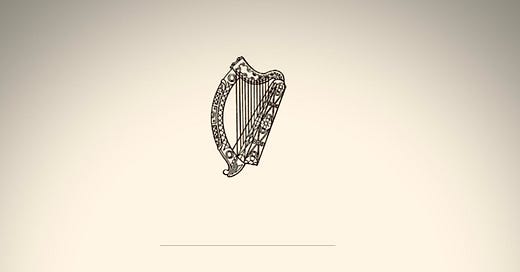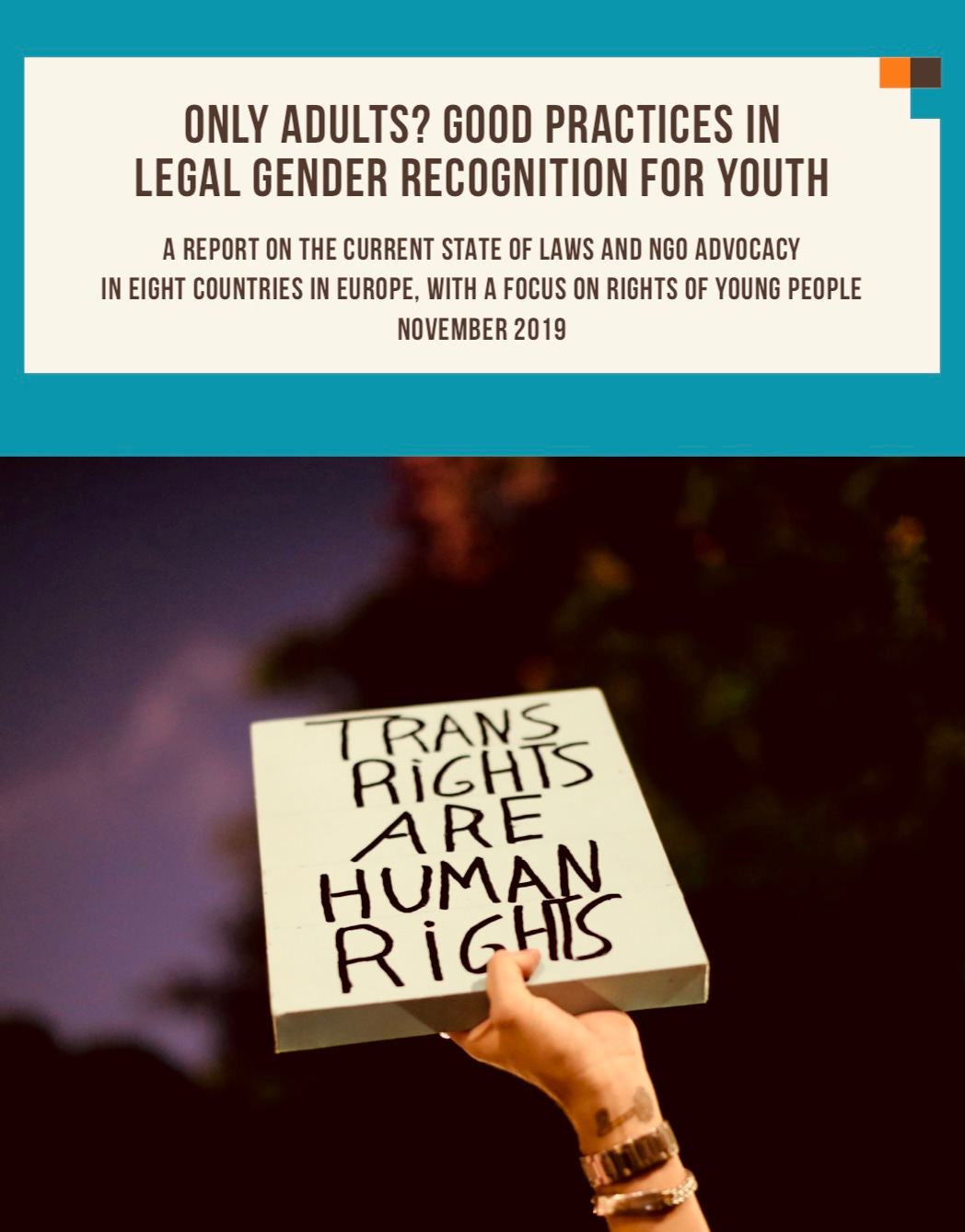Ireland's Gender Recognition Act - Part 1
You were left out of the picture. By Catherine Monaghan
This year marks a decade since the introduction of Ireland’s Gender Recognition Act 2015. The meaning and implications of the Act are not widely known, and there’s a reason for that—we weren’t told. There was no consultation with the general public, no call for public submissions, and no nationwide media campaign. Before our recent elections, I asked every politician who called to my door (and there were several) if they were aware of our gender recognition legislation and the fact that it has led to violent male sex offenders being imprisoned with women in Limerick Prison. Not a single one admitted any knowledge of the issue. But, as they say, it’s never too late to learn, so let’s delve in.
The Gender Recognition Act
Ireland’s Gender Recognition Act 2015 is a piece of legislation that allows individuals to legally change their sex and have it fully recognised for all legal purposes, including on birth certificates and official documents.
Anyone aged 18 and over can declare a change of sex without the need for medical assessment, diagnosis, or intervention of any kind. This is known as “self-ID”. Applicants simply fill out an online form and submit a statutory declaration. They are then issued a Gender Recognition Certificate (GRC), and their new gender is legally recognised as their preferred gender for all purposes.
Young adults aged 16–17 can apply for a GRC with court approval. They must obtain a court order exempting them from the requirement to be aged 18, have the consent of parents or guardian(s), and provide written approval from both their primary medical practitioner and either a psychiatrist or an endocrinologist not involved in the young person’s medical care.
Ireland was one of the first countries to adopt this approach of self-declaration. We went from having no means of legally changing gender before 2015 to full self-ID once the Gender Recognition Act (GRA) was introduced. Our nearest neighbour, the UK, requires a medical diagnosis of gender dysphoria and evidence of two years living in the desired gender before granting a GRC.
Timing is Everything
The Gender Recognition Act was passed by the Oireachtas (Ireland’s national parliament) on 15th July 2015. It came into effect in September 2015 after being signed into law by President Michael D. Higgins.
Around the same time, the Marriage Act 2015 also came into effect. The Marriage Act amended the Irish Constitution to make same-sex marriage legal. Ask any Irish adult about the legalisation of same-sex marriage in Ireland and most will have memories of it. It was one of the most high profile social issues in modern Irish history and there was extensive public consultation, media coverage and grassroots activism. There were national campaigns run by various NGOs and a high level of engagement by politicians and political parties with then-Taoiseach (Ireland’s Prime Minister) Enda Kenny publicly supporting the "Yes" vote.
Nothing to See Here
The Gender Recognition Act required no change to the Constitution, so there was no need for a referendum. However, legislation that allows people to legally change their sex impacts the wider community, particularly women, and surely warrants scrutiny. For reasons we’ll explore, public awareness was limited, and there was no opportunity for discussion or debate. Critics, including some women’s rights organisations, have argued that this amounted to a lack of democratic engagement, given the scope of the change.
Among the issues worthy of consideration were:
Single-sex spaces: If access to women’s services and spaces—such as prisons, refuges, changing rooms, and toilets—is based on legal gender or gender identity rather than biological sex, these are no longer guaranteed to be female spaces. The need for women’s spaces is based on biological sex, and provision must also be based on biological sex. Women need guaranteed safety, dignity, and privacy when they are vulnerable, such as when changing clothes, using bathrooms, sleeping, seeking refuge, or especially if they are sick, incapacitated, or imprisoned.
Women’s sport: Admitting males who identify as girls or women into female sports is neither safe nor fair. Even with hormonal treatment and decreased testosterone levels, males retain the advantages of male puberty. They are generally bigger, faster, and stronger from a young age. Women and girls deserve safety and fairness in sport, whether for recreation or at an elite level.
Equality law and protections: The introduction of Gender Recognition Certificates has created a conflict of rights. The Equal Status Act states that it is reasonable and legal to have women-only spaces, but the Gender Recognition Act says that a man who identifies as a woman and obtains a GRC is legally female and entitled to enter those spaces. This has resulted in violent men being placed in women’s prisons.
Data collection and statistics: Official statistics on health, employment, crime, and other issues often rely on sex-disaggregated data. Legislation that allows individuals to choose their sex falsifies public health research, equal pay audits, and crime statistics. Future policies on health, education, employment, and social issues depend on accurate data.
Medical care and research: Sex differences are critical in medical research, assessment, diagnosis, and treatment. Males and females have different requirements and responses to medical conditions, medications, and treatments. Biological sex is the only safe basis for planning healthcare in both personal and public spheres.
Not only was the general public left out of the process, but many relevant organisations were also not consulted. A limited number of medical professionals were involved, but no professional bodies, such as the Irish Medical Organisation or the Irish College of Psychiatrists, were included. The Ombudsman for Children, Tusla, the Children’s Rights Alliance, and various educational organisations might have offered valuable contributions regarding child safeguarding and gender recognition for under-18s had they been consulted.
None of this was accidental. A little digging reveals that secrecy, distraction, and behind-the-scenes lobbying are deliberate, documented tactics explicitly encouraged by activists and advocates internationally for gender recognition and self-ID. They have been successful on a global scale, with Ireland being just one of several countries to quietly adopt laws that endanger children and undermine women’s sex-based rights.
The Dentons Playbook
In 2019, multinational law firm Dentons, in conjunction with IGLYO, an international LGBTQ+ youth organisation, and the Thomson Reuters Foundation, published a report: Only Adults? Good Practices in Legal Gender Recognition for Youth.
The report, also known as the Dentons playbook, contains strategic advice on how to advance legislation to allow children and young people under 18 to legally change their gender. Adult gender recognition laws are presented as part of the strategic and legislative landscape necessary to support gender recognition and self ID for under 18s. The Dentons report may not have been published until 2019, but the tactics were known and they were used to their full advantage in Ireland. The consultation process for Ireland’s GRA fit the Dentons bill perfectly, adhering closely to advice including:
“Get ahead of the government agenda” - activists should act early, ideally before the government begins drafting laws, so that they can shape the legislative agenda rather than react to it. (p.19, point 5)
“Tie your campaign to more popular reform” - align gender recognition reforms with more popular legislation (for example, same-sex marriage), especially when gender identity issues may face public resistance. (p.20, point 7)
“Avoid excessive press coverage and exposure” - limit media exposure and focus on direct lobbying of politicians behind the scenes in order to avoid public backlash. (p.20, point 8)
The Dentons playbook is tangible evidence of an egregious attempt to hoodwink citizens around the world into adopting legislation that most would consider at best dubious, at worst sinister and dangerous. Other countries that have adopted gender recognition legislation after campaigns that followed the Dentons’ guidelines include Iceland, Malta, Norway, Sweden, Denmark, and Germany.
So, who was involved in the development of Ireland’s Gender Recognition Act? In Part 2, we’ll take a closer look at the narrow consultation process that took place under the radar.
Our government and national media failed to keep the public informed about this important issue, but we’d like to do better. If you are interested in helping us raise awareness about gender recognition and self ID in Ireland, please email saram@genspect.org








I think the bill must be unconstitutional as it undermines our social fabric and attacks the position of woman. I think it should be challenged!